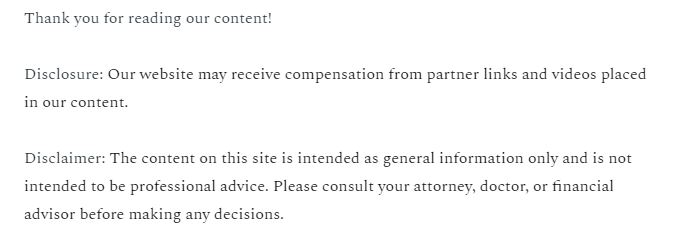
It might be the most exciting time in your teenager’s life, but it might be the most harrowing time of your life. When your teen approaches 16 years old and wants a driver’s license, you need to take to prepare. Drivers who are 16 years old have more accidents than drivers of any other age group. This can take a severe toll on your finances, insurance rates, and psychological well-being. Worry about your teen is justified. According to a study in 2016, the leading cause of death among teenagers is motor vehicle crashes.

Here are five ways to prepare for a new teenage driver:
Driver’s Education
If your teen’s school offers driver’s education, you might be relieved of the responsibility to find a private driving school. However, depending on the state you live in, even the course offered by the school may be inadequate to properly train your teen to drive.
In 1975, every state plus Washington, D.C. offered driver’s education courses and 95% of students took advantage of the opportunity to learn to drive. In 2015, a study found that only 20 states offered driver’s education that required at least 30 hours of instruction in a classroom and at least six hours of driving time. The remaining 30 states driver’s education courses that required fewer classroom hours, fewer driving hours, or fewer classroom and driving hours.
Thus, one step you may take to prepare for your teen driver is to seek out a private driver’s training course. While you are not looking for a professional commercial driver’s license course so your teen can join the local trucking industry, there are certain standards that you may want to look for in a private driving school.
- Check the school’s accreditation
- Check the instructors’ experience and credentials
- Find out the amount of classroom time and driving time
- Read the course schedule and syllabus
- Ask about the age and condition of the driving school’s equipment, including their cars and simulators
- Call the Better Business Bureau and search online to make sure there are no complaints about the school
- Contact your insurance company and make sure you are insured while your driver is training
- Ask the driving school about its insurance coverage
- Find out if the driving school provides supplemental educational materials for you to reinforce their lessons with your teen
One factor not mentioned in this list is cost. Of course, the cost will vary from driving school to driving school. However, more important than cost is value. If cost is a concern, try to balance the number of hours of instruction (both classroom and driving) against the cost and seek out a course that provides the highest number of instructional hours for the amount you want to pay. Remember that you can practice with your teen after the course is finished if your teen requires more practice hours.
Driver’s License Testing
Before you go to your state’s driver’s license agency, it may be worthwhile to review your state’s requirements for new drivers. Many states have adopted graduated driver’s license requirements that include restrictions based on your teen’s age and amount of driving experience.
For example, some states issue a learner’s permit so the teen can gain a minimum number of hours of driving experience. While driving on the learner’s permit, the teen may be restricted in the number and age of passengers allowed in the car. Similarly, the teen may be restricted to driving during daylight hours while driving on the learner’s permit. After you certify that the teen has driven for a predetermined number of hours, the driver’s license division may upgrade the learner’s permit to a regular driver’s license.
In researching your state’s driver’s license requirements, you may also want to have your teen find a practice written test and a list of requirements for the road test. Preparing beforehand can reduce the likelihood of test anxiety, which can interfere with our ability to perform well on tests. Practice tests can help the mind feel more prepared and less anxious, about taking the written and road tests.
Many people suffer from test anxiety, which can range from nervousness to a complete physical shut down. Test anxiety is the result of a fear response that triggers the “fight, flight or freezes” instinct. In most people, this response triggers a rush of adrenaline and cortisol. Adrenaline causes the heart rate and breathing to increase, preparing us to fight or flee. Adrenaline also heightens the muscle receptors so that they respond more quickly in response to nerve stimulation. This can lead to shaking or twitching.
Cortisol causes an increase in blood pressure and an increase in blood sugar levels. Cortisol also causes the digestive system to shut down, which is why some people throw up or need to urinate when they are under stress. Needless to say, any of these hormonal responses would likely result in a failure on the written test and the road test.
Finally, remember that your teen will need to pass a vision test to receive a driver’s license. It may be worthwhile to take your teen to an ophthalmologist or optometrist for an eye exam before heading to the driver’s license agency. Your teen might need glasses or contact lenses, or might need to update the prescription of his or her glasses or contact lenses, prior to taking the vision test for a driver’s license. Most states require at least 20/40 vision in at least one eye to qualify for a driver’s license.
Car Insurance
Before your teen starts driving, whether, on a learner’s permit or a full driver’s license, you will need to add your teen to your automobile insurance policy. Your car insurance covers more than just your teen driving your car. It usually includes liability insurance that covers your teen driving other people’s cars.
There exists a substantial risk of your teen getting in an auto accident. As long as you list your teen as an additional driver on your car insurance, the insurance policy should cover both bodily injury and property damage if your teen is involved in an auto accident.
Conversely, if you do not carry car insurance that lists your teen as an additional driver, your car insurance will almost certainly decline to pay for any damage that he or she may cause. This will leave you exposed to a lawsuit from a car accident injury attorney. Although adding your teen to your car insurance will cause your premium rates to skyrocket, this may be substantially cheaper than the alternative. Medical expenses and property damage in even the most minor car accidents can run into thousands of dollars, potentially causing irreparable damage to your finances.
The pricing of car insurance has evolved with increased competition and improved statistical analysis. Rather than offering an automatic rate drop when your teen turns 25, many insurance companies offer a rate drop at a younger age as long as your teen avoids any accidents that result in insurance claims and any violations that result in traffic citations.
For some insurance companies, these price breaks can occur as early as 21 years of age. These price breaks are based on statistical evidence that suggests the likelihood of an accident goes down as a function of safe driving history as much as age. Price breaks may also be offered when your teen enrolls in college or maintains high grades. Again, this is based on statistics showing that good students are less likely to be involved in car accidents.
Some insurance companies also offer driving monitors that either connect to your car’s data port or are downloaded as an application onto your teen’s cell phone. These driving monitors collect data about your teen’s actual driving habits and report them to the insurance company. Based on your teen’s safe driving habits, you may be eligible for an additional “safe driver” discount.
Install a Safe Driving App
Cell phone technology has made your young driver safer in some respects. In the event that your teen’s car breaks down or runs out of gas, he or she will be able to call for assistance. Similarly, navigation apps help reduce the odds that your teen will get lost or wander into the wrong neighborhood.

However, cell phones also play a major role in distracted driving injuries and deaths. Recent studies show that nearly 40% of all teenage drivers text and drive. Unfortunately, rather than gaining common sense as we age, we lose our fear as we age. The same survey showed that a whopping 56% of people aged 18 or older text or email while driving.
This is a serious problem. According to the U.S. Centers for Disease Control (or CDC), distracted driving results in over 3,000 deaths and over 400,000 injuries every year in the U.S. According to the CDC, distracted driving can be categorized into three types.
- Visual: You take your eyes off the road. Examples include reading and putting on makeup while driving.
- Manual: You take your hands off the wheel. Examples include eating and drinking while driving.
- Cognitive: You take your mind off driving. Examples include talking while driving.
The danger posed by texting while driving is that it causes all three types of distraction. Your eyes are on your screen rather than on the road. Your hands are typing rather than controlling the vehicle. Your mind is on your message rather than driving. This is a recipe for disaster whether it be in the form of an accident, injury, fatality, or lawsuit from an automobile accident attorney.
Fortunately, technology has provided a solution to the problem that it created. Safe driving applications can be downloaded to your teen’s phone. These apps offer many features to reduce distractions while driving. Most silence text and phone call notifications when the phone’s GPS or accelerometer senses that the phone is in motion. Some can be configured to send an automatic reply when a text message is received while driving. Some can even send a notification to you if your teen disables the safe driving app.
You can also set an example for your teen by installing a safe driving app on your phone as well. If you do not want to completely shut yourself off from your phone while driving, some safe driving apps enable a voice control mode when the phone senses that it is in motion. And most people are familiar with built-in Bluetooth-enabled interfaces that send calls through your car’s audio system for hands-free operation while driving.
Repair and Maintain Your Car
Many accidents are caused by improper or neglected car maintenance. Simple tasks, such as checking the condition and inflation of your tires, replacing your wiper blades, and testing your headlights, tail lights, brake lights, and turn signals, can go a long way to making your car safer, particularly for an inexperienced driver like your teen.
In this respect, it may be worthwhile to take your car to an auto service garage to have a complete safety inspection. A car that is in an unsafe condition could be a disaster waiting to happen for a teen driver. Having the brakes, axles, steering, CV joints, and other critical systems check before your teen drives your car may save your teen from a serious injury or even death.
Shop Used Cars
If you decide that you would rather your teen damage her own car rather than spending all your time and money taking your car in for car dent repair and paintless auto repair, you may want to spend some time looking at used cars.

Most towns have at least one auto dealer that sells used cars. Most used car searches are for used cars priced less than $5,000. If you consider that your deductible under your car insurance policy is probably $5,000, spending $5,000 on used cars for your teen seems like money well spent. In fact, if you pick the right used cars, your teen could probably destroy several used cars and still come out ahead compared to paying the deductible amount if he or she had damaged a new car.
While tastes in the style of used cars may vary, there are a few things to keep in mind when shopping used cars.
- Used cars might not be what they seem. Buy a vehicle history report from an online reporting company.
- Take the car to an auto repair shop. Many shops have a checklist they use for inspecting used cars.
- While dents and other cosmetic damage might not pose a problem, body rust on used cars can mean they may are structurally compromised.
- Listen to it running with the hood open. Used cars that make grinding, squealing, or rattling noises might have serious problems that may pose a safety risk.
- Check the mileage. When a used car has more than 10,000 miles per year on its odometer, it may have been sustained more wear than its model year might suggest.
Preparing for a teen driver can be a fun experience. However, do not get caught up in the celebration. There are serious tasks that you must tackle. Making sure your teen is properly trained to drive and prepared to pass all the driver’s license requirements can take some planning. Getting your car ready, or looking at used cars for your teen, also requires some research.

